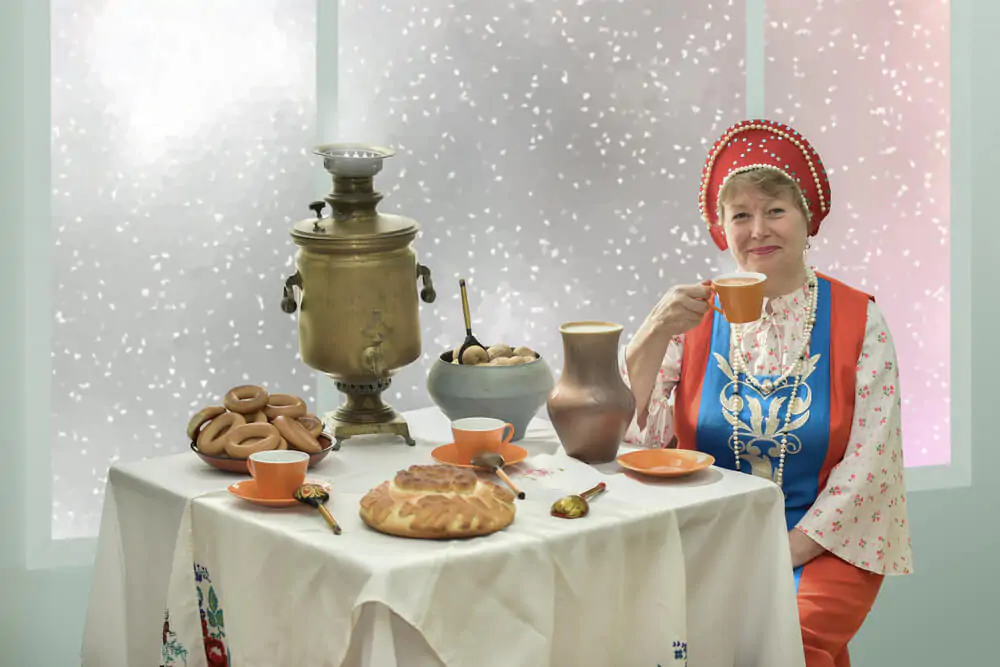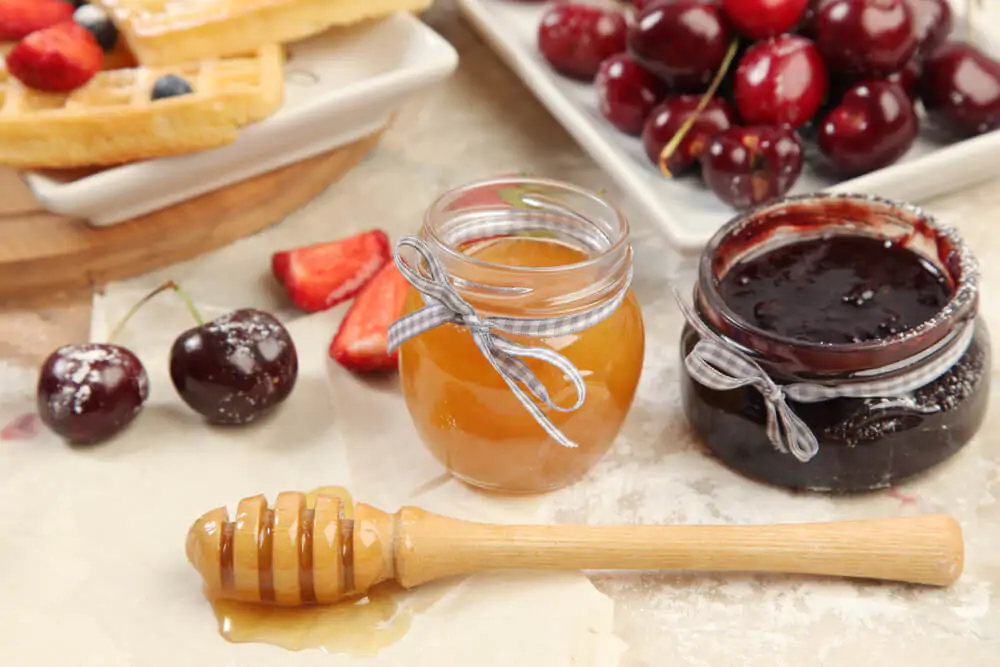Russian tea is a hot beverage popular in Russia and America. It’s brewed strong, then prepared with orange and lemon juices, spices, and sweeteners that go beyond just a cube of sugar. Want to know more about what is Russian tea? Keep reading to find out!

Many regions have their own twist on tea (think the diabetes-in-a-glass that is Southern sweet tea), but none may be more singular than Russian tea. It often contains orange juice and even jam. Yes, like jam from a jar.
But it began as the hot drink of the upper class in Imperial Russia, where it was hot black tea with lemon and sugar. It’s progressed since then.
Russian Tea’s Roots
The black tea-based hot beverage known as Russian tea first appeared in the United States (at least in print) when it was part of the subject of a December 1982 article in the “New York Times.” After the turn of the century, recipes for the brew circulated, calling for lemon and orange juices, sugar, cloves, and tea.
It tuned out to be a pretty big hit outside of Russia, though it was a big deal there, too. Because of Russia’s long, brutal winters, inhabitants of the region sought out hot drinks since no one wants ice-cold water when it’s eight degrees outside.

Typically, the Russian version can involve brewing two or three different types of tea before combining them. The need for boiling water for the steeping process gave rise to the samovar, a kind of teapot that eventually became something of a functional art form.
Tea leaves from India or China often find their way into Russian tea, where they are brewed into a potent, dark tea concentrate called zavarka. In Russian tea culture, the zavarka gets decanted into teacups, after which each tea drinker adds boiling water to it to dilute it to its preferred strength. This tea concentrate can be diluted with water for a continuous infusion of the warm beverage.
You might also be interested in our Hunza tea guide.
Russian Tea Today (In the West)
These days, Russian tea has evolved into a complicated drink. Even if the zavarka method remains in use, other things get added to Russian tea.
While there exist few definitive recipes for anything, one Russian tea recipe calls for steeping tea leaves or bags while preparing the other ingredients.
To make a little more than a quart of tea:
- Brew eight (or more, because remember, Russian tea is strong) tea bags in four cups of water.
- Combine about a half-cup of water, one half-cup to one cup of sugar, a handful of cloves, and a cinnamon stick, and boil it all for about a minute.
- Remove from heat and remove the cloves and cinnamon stick.
- Add a half-cup of lemon juice and a quarter-up of orange juice and stir it all together. You may also add sugar, pineapple juice, or lemonade concentrate at this point.
- Stir in the tea.
- Serve with orange wedges.
There are variations everywhere, and your grandmother may have her specific recipe with wildly different proportions, but this recipe represents the general idea of Russian tea.
Instant Russian Tea
Since Americans are in such a hurry, we came up with a quicker version involving Tang, which isn’t just for astronauts anymore. Rather than having to stir in orange juice, you can get some sense of Russian tea by stirring some of the powdered orange drink mixes into the hot water as the tea steeps.
Sweeteners
We mentioned earlier that sugar, honey, or other sweeteners appear in Russian tea, the implication being that there’s more of it than the small amount the above recipe calls for.
Acceptable sweeteners in Russian tea include sugar, honey, and jam. Each sweetener brings a different flavoring to the tea. Combining some of them makes the possibilities endless, so it would seem nearly impossible not to find a Russian tea you like since you control the sweetener.

Since we’re talking about stirring jam into a drink, it stands to reason that Russian tea is a drink served hot. You’ll be hard-pressed to find someone drinking a glass of iced Russian tea.
This beverage holds an interesting history and with its unique recipe, it’s definitely worth a try!
If you liked this article check out What Is Ginger Tea?
